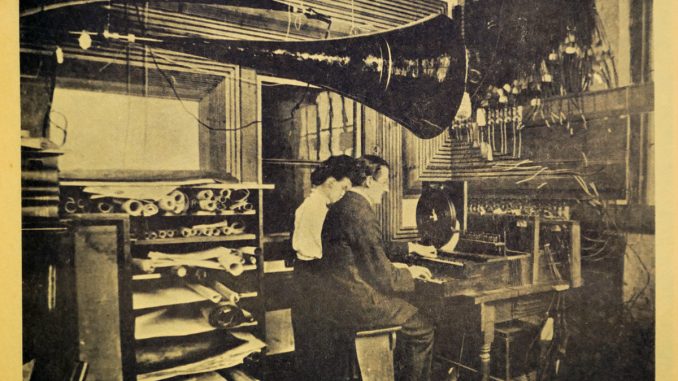
Thaddeus Cahill was born 1867 in Oberlin, Ohio and by the age of 14 he’d built his first telephone receiver to play with and read Helmholtz’s On the Sensation of Tone, which set his fertile imagination on fire. He became an attorney and moved to Washington, D.C. where in 1895 he filed for a patent on his “musical machine” the Telharmonium – a “perfect instrument” whose electronic music would be distributed on the existing cable network (via leased phone lines).
“Get Music on Tap Like Gas or Water”
The trouble about these beautiful, novel things is that they interfere so with one’s arrangements. Every time I see or hear a new wonder like this [Telharmonium] I have to postpone my death right off. I couldn’t possibly leave the world until I have heard this again and again.” ~ Mark Twain
Cahill’s Telharmonium saw its first public performance in 1904 broadcasting live music from Holyoke, MA to New Haven, CT 70 miles away. Remember, this was before the advent of the amplifier or public broadcast radio so people were generally enchanted. For business reasons, Cahill and his 60 foot long 200 ton $200,000 musical machine moved to NYC in 1906 (in 30 boxcars) and set up residence in Telharmonic Hall at 39th and Broadway.
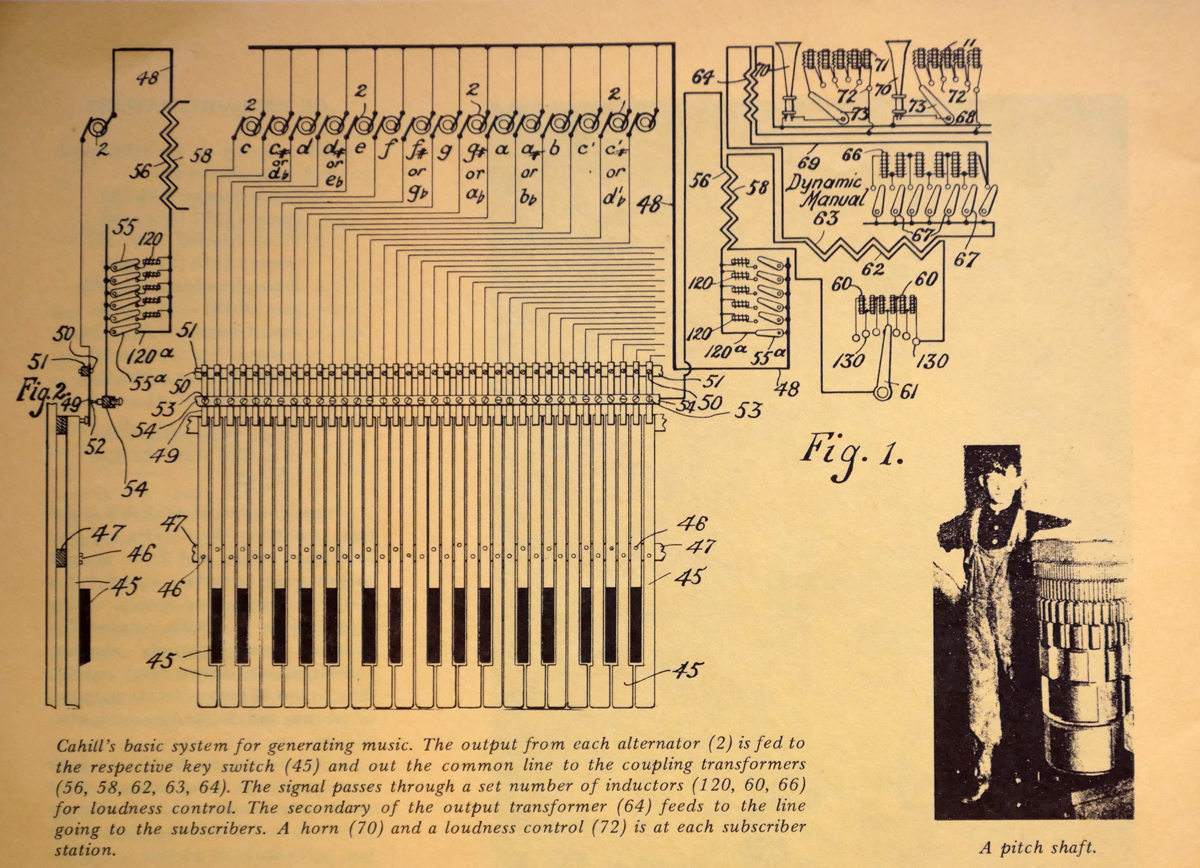
Here’s Ray Stannard Baker on the Telharmonium’s virtues from his article “New Music for an Old World”, McClures (July 1906):
I am not a music critic, but of a few things any one may at once make sure. when the music began, it seemed to fill the entire room with singularly clear, sweet, perfect tones. Although expecting somehow to hear the whir of machinery, or the scraping sounds common to the phonograph [ouch!, ed.], I was at first so much interested in the music itself that I did not once recall its source. Afterwards, I listened especially for some evidence of the noisy dynamos which I had just seen, but without distinguishing a single jarring sound; nor was there any hollowness or strangeness traceable to the telephone or its horn attachment. It was pure music, conveying musical emotion without interference or diversion. As one listens, the marvel grows upon him – the marvel and the possibilities which it suggests. The music apparently comes out of nothingness, no players to be seen, no instrument, nothing but two wires running out of the wall; and in hundreds of different places widely separated – the present machine can supply over one thousand subscribers – the same music may be heard at the same moment.
The first impression the music makes upon the listener is its singular difference from any music ever heard before; in the fullness, roundness, completeness, of its tones. And truly it is different and more perfect; but strangely enough, while it possesses ranges of tones all its own, it can be made to imitate closely other musical instruments: flute, oboe, bugle, French horn and cello best of all, the piano and violin not as yet so perfectly. Ask the players for fife music and they play Dixie for you with the squealing of the pipes deceptively perfect.
I thought it worth providing most of that quote since it seems to me to be among the first audiophile reviews – “I was at first so much interested in the music itself that I did not once recall its source” could have been written yesterday…
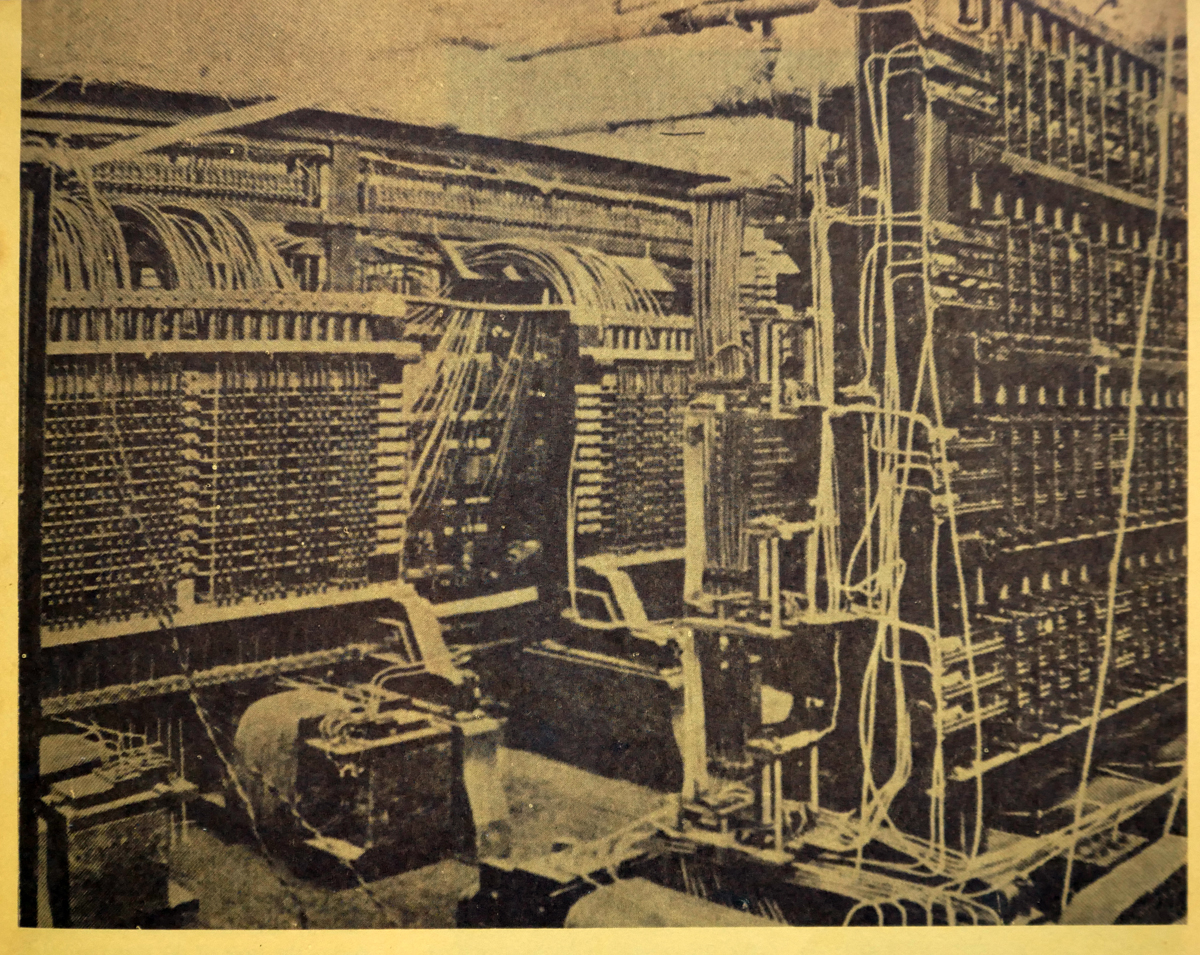
What the hell is a Telharmonium and how the hell did it make its perfect music? As noted, the Tellharmonium was a big-ass machine driven by electric power. Basically the machine consisted of alternators (dynamo hum) which drove a series of “pitch shafts” at different speeds causing them to produce different tones. While his patent called for 12 pitch shafts to recreate the complete chromatic scale over seven octaves as well as the associated harmonics, it appears as if only 8 were actually built. The operators/musicians (it took two to play most music) controlled which tones played as well as the volume of the associated harmonics (which gives the tones their distinct ‘voice’ – thanks Helmhotlz) through specially designed touch-sensitive keyboards and draw stops or pedals which were connected to an elaborate (a fucking elaborate) switching network. The Telharmonium’s output was broadcast via telephone wire to a telephone fitted with a paper horn/amplifier. Cahill claimed a frequency response of 40Hz-4,000Hz for his musical machine.
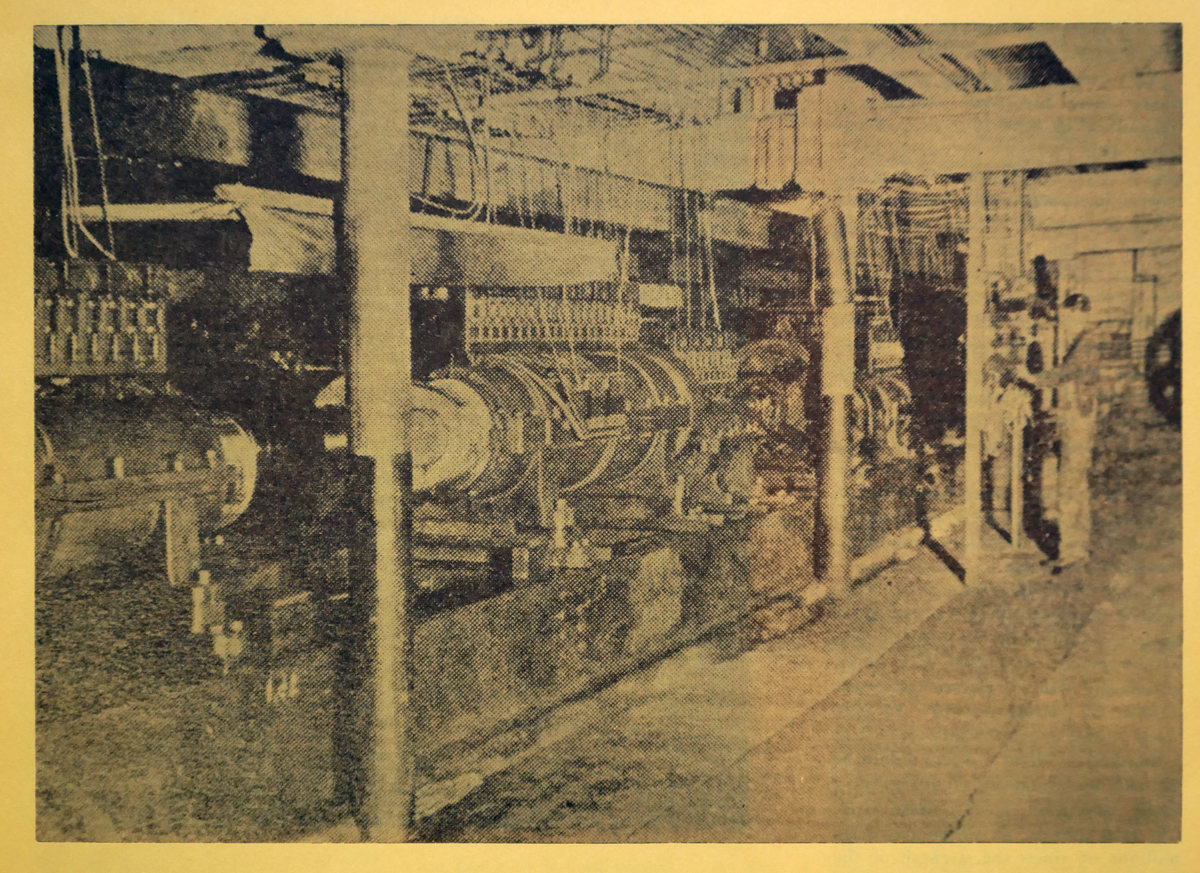
Of course Cahill’s perfect musical machine was never perfected. He said that 3-4000 alternators would be needed to complete his instrument but no one ever ponied up the interest or cash to make that happen. In total three Telharmonium’s were built and there were mechanical and electrical problems with each including interference on the phone lines (rumor has it a Telharmonium broadcast ‘disturbed’ one of JP Morgan’s phone calls), horn shout and ‘robbing’ which essentially meant that the more complex the tones played simultaneously, the lower their associated volume.
Here’s E.H. Pierce from his article “A Colossal Experiment in Just Intonation”, The Musical Quarterly (July, 1924) on the machine’s shortcomings:
…owning to certain electrical complications too technical to explain here, the instrument was not fitted to the rendering of massive harmony. It was at its best in the use of two-voice and three-voice harmony, which is, of course, not in accordance with the genius of modern music.” and “although it was possible to produce many beautiful and varied tone-colors, it was impossible to use more than two of them at once.” And finally, “in spite of the variety of tone-color available, the instrument itself had its own special character which pervaded everything, and which in time grew highly irritating to the nerves.
There’s obviously much more to this story of a perfect musical machine that really didn’t have a chance to grow up to be all it could be (or figure out what it wanted to be) because it was too complex and expensive to perfect. Financial problems and the radio helped drive the final nails in the Telharmonium’s really big coffin.
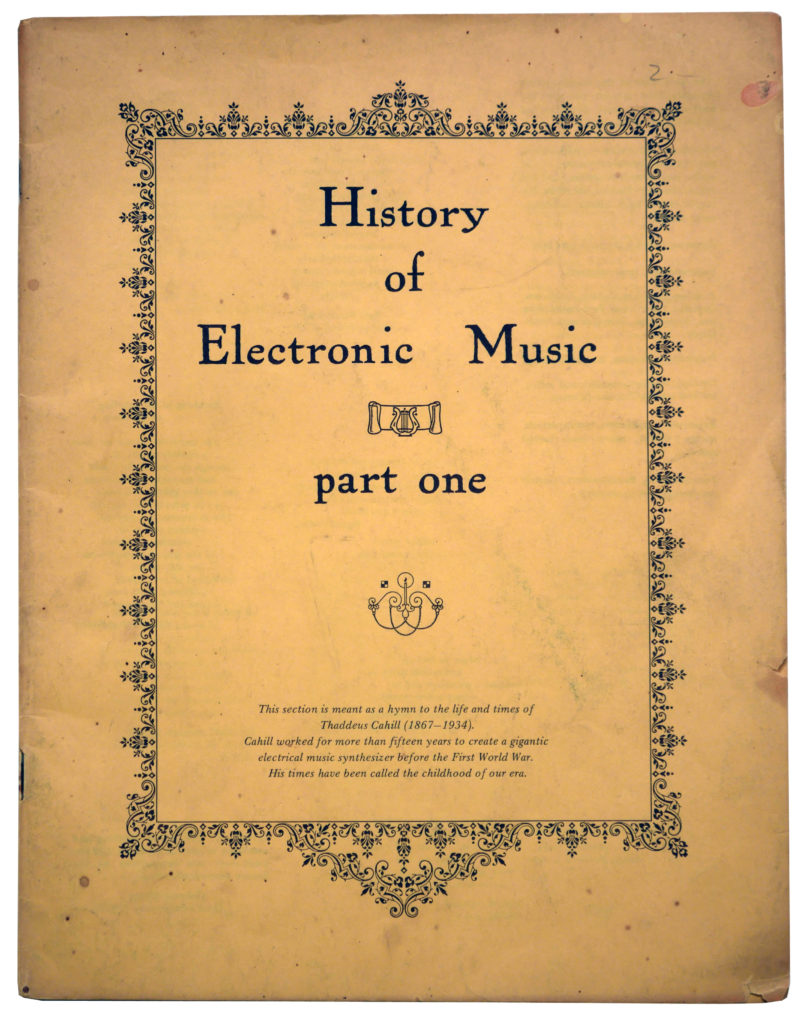
You can watch a movie about it here and/or read an entire book about it but I have to say I prefer my seemingly home-made booklet “Compiled and written by” William A. Johnson, Charles R. McHugh, Howard Rice and Thomas L. Rhea. They offer a wonderful introduction and place Cahill’s Telharmonium within the context of the fascinating creative mayhem and madness that was the dawn of the 20th Century. Included are pages of quotes from James Joyce, Stravinsky, Kandinsky, Charles Ives, Ambrose Bierce, F.T. Marinetti, the ever-intriguing Luigi Russolo, Hugo Ball, Marshall McLuhan, Kafka, George Braque, Debussy, Einstein, and more.
“You are looking into a fog and for that reason persuade yourself that the goal is already close. But the fog disperses and the goal is not yet in sight.” ~ Ludwig Wittgenstein, Notebooks (1915)
In 1962 the last surviving Telharmonium was sold for scrap.

